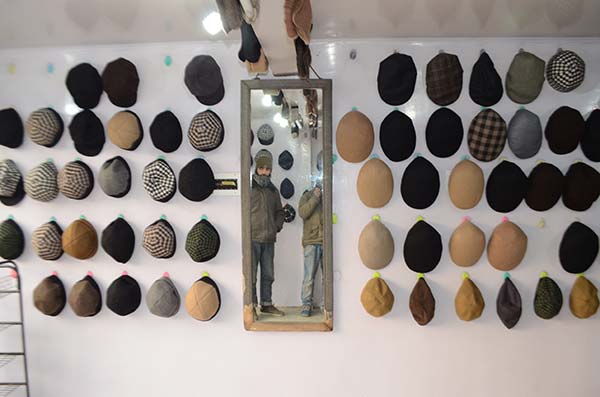A master wood carver who says he carved the UN logo in the 1970s, still adorning the wall of the General Assembly is desperate to have a pair of patient ears to tell tales of wisdom and heritage after putting in sixty years of service, reports Nuzhat Mushtaq

Ghulam Nabi Hakak, 72, is sitting in one of the corners in his sea-foam painted kitchen, busy carving the floral pattern over the oval piece of wood with his chiselling tools. He might be one of the eldest artisans still working with his chisel.
Born at Nawa Bazar in 1946, Hakak said, he wanted to study but financial constraints led him to drop-out. “It was 1953, and I was just 12 years old,” Hakak remembers. “We used to be a big family but without resources. So, one of my father’s friends took me to his son-in-law who was then wood carver and became my first teacher in wood carving.”
Initially, it was difficult to handle sharp tools.
“Many times I got injuries as it was difficult for me to handle them while carving patterns and designs on wood, it took me some years to understand the work and handle these tools,” Hakak said. There, he worked for 12 years at 2 annas (a rupee has 16 annas) per day (Rs 3, a month). Then the wages improved to Rs 3.50, a day and somehow, I managed Haakh Battee for my family.
In delicate arts like woodcarving, picking up designs takes time. “Gradually, I started working on Jungle designs, Dragon, Chinar, grapes, floral and Kaemeii and managed mastering them,” Hakak said. “But the Chinar and grapes designs were the most popular.” Then he would work with Subla & Co that operated from Nawab Bazaar.
“In 1970’s our company, one of the famous wood carving company of India got an order about UNO logo,” Hakak said. “They sent the trace of that logo and I got the opportunity to work on that.” Shabir, Hakak’s son says that the logo carved by his father is still present on the wall of UN General Assembly. He says his father was not paid anything, especially for that logo though the promoters of the company got a “hefty” sum.
Hakak worked from 1958 to 1987 with Subla& Co. After 29 years of service, he had graduated to a salary of Rs 30, a day.
Now Hakak is working in his own factory with his younger brother and many budding wood carvers. Blood is always thicker than water. “It was my younger brother Mohammad Shafi who played a key role in helping me in this work besides an apprentices Fayaz Ahmad Shah who worked with me since childhood,” Hakak said. “They are with me since I started my own Karkhana.”
Hakak Jr said his father works on orders he gets. “My father works from morning to evening with his apprentices and his younger brother. He has no masters, anymore,” Shabir said. Hakak, sometimes, gets interesting disciples.
“I still remember Yunil from France who was very hardworking, intelligent and dedicated towards his passion,” Shabir said. “For six months, he worked hard to learn to design from my father and my father trained him well without any fees.” The French learner was an architect.
Now Hakakhas a problem. He is disheartened as the new generation is not interested in learning this art the way foreigners are.
“We have Craft Development Institute (CDI) here where the government can take initiative for the internships of students studying there so that they can learn this art practically from my father or any other master wood carver,” Shabir articulated his father. “But the government brings people from outside to deliver and it does not help the art anyway.” He suggested the CDI must hire master craftsmen and send interns to them on Sundays.
Hakak said even in acknowledging the services of craftsmen like his father, the government is acting quite strangely. “There are many artisans who worked hard and were not recognized since ages,” Shabir said. “Had they been part of any other society, their work and contributions would have been showcased globally.” The new generation does not know the art at all.
Hakak gets job works locally and from offshore too. The local orders are about special door designs, dressing table, beds and wooden boxes and stand for the Quran and sometimes.
“I recently sent a wall hanging to Mauritius on which newly wed couple’s name was inscribed by me,” Hakak said. “I had carved Kaabah and Madina Pak on a wall hanging which I gave to Suffering Moses that eventually landed in the office of Deputy Director Handicrafts in 2015.”
Though the returns have never been so impressive, Hakak said it hardly disappointed him. “I thought I can’t do any other work because as I am trained in this art so I dedicated more time for the betterment of earning a good livelihood,” Hakak said. “The times were very difficult when the tool would injure me but that is how nearly six decades were spent.” His son remembers him working for 18 hours, a day. “He never complained,” Shabir insisted.
Still, sharp-sighted Hakak can make the difference between different varieties of woods and 100 to 150 tools that are used in the craft. “For doors, Deodar is used, and for furniture work, Walnut is the best,” Hakak said, pointing towards the different logs. “He picks up his tools identifying them as Sumbhii that is used for fill-ups, then there is Daegeii, Sebargii, Trubarghi, Advaeteath, Naeriwoel.”
Some of these tools are sharp like a sword. But Hakak puts his master fingers over the sharp edges in a way as if he caresses these little knives. “I have spent life with them, literally. They do not hurt any more.”













